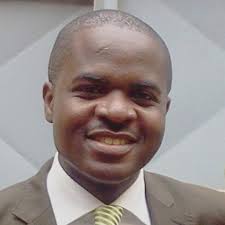IRM cardiaque au centre hospitalier national Dalal Jamm : évaluation des sept premiers mois d’activité
DOI:
https://doi.org/10.55715/jaim.v15i4.548Keywords:
MRI, Heart, Cardiomyopathy, Myocarditis, LVNC.Abstract
Purpose: To evaluate the first activities of cardiac MRI at Dalal Jamm National Hospital Center.
Materials and methods: This is a cross-sectional descriptive study over 07 months. We included 34 patients referred for cardiac MRI. Exams were performed with a Hitachi 1.5 Tesla echelon smart. The parameters studied were age, sex, morphological aspects of the heart (cardiac chambers, left ventricle wall, pericardium, and signal), segmental and global kinetics, late enhancement, cardiac function, and the final diagnosis. Data entry and processing were performed using Epi-Info 2005 software.
Results: The mean age of the patients was 45 years with extremities of 20 and 73 years and a gender ratio of 0.7. Thirty-four MRIs were performed and 11 came back normal (32.4%). Cavity dilation was noted on seven examinations with involvement of the right atrium in all patients. Parietal thickening was objectified in eight patients with a maximum of 33 mm. Pericardial thickening and effusion were observed in 2 patients. All the patients had a normal T2 signal except only one. Nine patients presented an alteration of the LVEF and two an alteration of the FEVD. Two patients presented with segmental hypokinesia (5.9%) and seven patients with global hypokinesia (21%). Eight patients had late enhancement, but no vascular systematization was found. Cardiomyopathies and myocarditis were the most common conditions and accounted for 32.3% and 17.6% respectively. Four patients had left ventricular non-compaction (11.8%). Two patients suffered from chronic constrictive pericarditis (5.9%). We had not had any examination request for a search of myocardial viability or an angio-MRI of the coronary arteries.
Conclusion: Cardiac MRI remains expensive but constitutes a relevant alternative in countries with limited resources. Cardiomyopathy and myocarditis are the conditions most encountered in our context.
RÉSUMÉ
Objectifs : Evaluer les premières activités d’IRM cardiaque au CHN de Dalal Jamm.
Matériels et méthode : Il s’agit d’une étude transversale descriptive sur 07 mois. Nous avions inclus 34 patients adressés pour une IRM cardiaque. Les examens ont été réalisés sur un appareil de marque Hitachi 1.5 Tesla echelon smart. Les paramètres étudiés étaient l’âge, le sexe, les aspects morphologiques du cœur (cavités cardiaques, paroi du ventricule gauche, le péricarde et signal), la cinétique segmentaire et globale, le rehaussement tardif, la fonction cardiaque et le diagnostic final retenu. La saisie et l’exploitation des données étaient réalisées par le logiciel épi-info 2005.
Résultats : L'âge moyen des patients était de 45 ans avec des extrêmes de 20 ans et 73 ans (âge médian de 50 ans) et un genre-ratio de 0,7. Sur les 34 IRM réalisées 11 étaient revenues normales (32,4%). Une dilatation cavitaire était notée sur sept examens avec une atteinte de l’oreillette droite chez tous les patients. Un épaississement pariétal a été objectivé chez huit patients avec un maximum à 33 mm. Un épaississement et un épanchement péricardique étaient objectivés chez 2 patients. Tous les patients avaient un signal en T2 normal sauf un. Neuf patients présentaient une altération de la FEVG et deux une altération de la FEVD. Deux patients présentaient une hypokinésie segmentaire soit (5,9%) et sept patients une hypokinésie globale soit (21%). Sur nos 8 patients présentant un rehaussement tardif aucune systématisation vasculaire n’a été trouvée. Les cardiomyopathies et la myocardite étaient les affections les plus rencontrées et représentaient respectivement 32,3% et 17,6%. Quatre patients avaient une non-compaction du ventricule gauche soit (11,8%). Deux patients souffraient d’une péricardite chronique constrictive soit (5,9%). Nous n’avions pas eu de demandes d’examen pour une recherche de viabilité myocardique ou une angio-IRM des artères coronaires.
Conclusion : L’IRM cardiaque reste onéreuse mais constitue une alternative pertinente dans les pays à ressource limitée. Les cardiomyopathies et la myocardite sont les affections les plus rencontrées dans notre contexte.
Downloads
References
2. Elliott P, Andersson B, Arbustini E, et al. Classification of the cardiomyopathies : a position statement from the European Society of Cardiology working group on myocardial and pericardial diseases. Eur Heart J 2007;29:270-6
3. Charron P, Gimeno Blanes JR et al. European Cardiomyopathy Pilot Registry: EUR Observational Research Programme of the European Society of Cardiology. EHJ, 2016;37:164..
4. Maron BJ, Towbin JA, Thiene G et al. Contemporary definitions and classification of the cardiomyopathies : an American Heart Association Scientific Statement from the Council on Clinical Cardiology, Heart Failure and Transplantation Committee; quality of care and out comes research and functional genomics and translational biology interdisciplinary working groups; and council on epidemiology and prevention. Circulation 2006;113:1807-16
5. Elliott P, Charron P, Gimeno Blanes JR et al. European Cardiomyopathy Pilot Registry: EUR Observational Research Programme of the European Society of Cardiology. EHJ, 2016;37:164.
6. Becker R, Haass M, Ick D, Krueger C, Bauer A, Senges-Becker JC, et al. Role of nonsustained ventricular tachycardia and programmed ventricular stimulation for risk stratification in patients with idiopathic dilated cardiomyopathy. Basic Res Cardiol 2003;98:259 66 https://doi.org/10.1007/500395-003-0398-7
7. Basso C, Calabrese F, Corrado D, Thiene G. Post mortem diagnosis in sudden cardiac death victims: macroscopic, microscopic and molecular findings. Cardiovasc Res 2001;50:290–300
8. Habib G, Bucciarelli-Ducci C, Caforio AL et al. Multimodality Imaging in Restrictive Cardiomyopathies: An EACVI expert consensus document. Eur Heart J Cardiovasc Imaging, 2017;18:1090-1121
9. Nijveldt R, Beek AM, Hirsch A, Stoel MG, Hofman MB, Umans VA, et al. Functional recoveryafter acute myocardial infarction: comparison between angiography, electrocardiography, and cardiovascular magnetic resonance measures of micro vascular in jury. J Am CollCardiol 2008;52:181-9
10. Zaoui N, Bachir N, Terki A, et Boukabous A Myocardite à COVID-19 : « à propos d'une série monocentrique de 33 cas » Annales de Cardiologie et d'Angéiologie Volume 71, Issue 4, October 2022 : 219-222
11. Diop AD, Cassagne L, Alfidja A, Gageanu C, Diop AN, Chabrot P, et al. Apport de l’IRM dans le diagnostic de la non compaction du ventricule gauche : à propos de deux cas. J Afr Imag Méd 2014; (6),3: 50.
12. Dodo B. La cardiomyopathie hyperthrophique à Dakar : Aspects épidémiologiques, cliniques, paracliniques et pronostiques [Mémoire du diplôme d’études spéciale en cardiologie]. DAKAR : UCAD FMPO ; 2016 : 56.
13. Engberding R, Bender F. Identification of a rare congenital anomaly of the myocardium by two-dimensional echocardiography : persistence of isolated myocardial sinusoids. Am J Cardiol. 1984: 53/11):1733-1734
14. Maron BJ, Towbin JA, Thiene G et al. Contemporary definitions and classification of the cardiomyopathies : an American Heart Association Scientific Statement from the Council on Clinical Cardiology, Heart Failure and Transplantation Committee; quality of care and outcomes research and functional genomics and translational biology interdisciplinary working groups; and council on epidemiology and prevention. Circulation 2006;113:1807-16
15. Elliott P, Andersson B, Arbustini E, et al. Classification of the cardiomyopathies: a position statement from the European Society of Cardiology working group on myocardial and pericardial diseases. Eur Heart J 2007;29:270-6
16. Kohli SK, Pantazis AA, Shah JS, Adeyemi B, Jackson G, McKenna WJ, et al. Diagnosis of left-ventricular non compaction in patients with left ventricular systolic dysfunction: time for a reappraisal of diagnostic criteria EurHeart J. 2008;29:89-95
17. Fennira S, Tekaya MA, Kraiem S.Left ventricular non-compaction : what should be known. Ann CardiolAngeiol (Paris) 2019;68:120-4.
18. Gournay G, Illouz E. Péricardite chronique constrictive. In : EMC Cardiologie. Paris: Elsevier; 1999 [11-016-A-10], 15.
19. Hamon M, Fau G, Née G, Ehtisham J, Morello R, Hamon M. Meta-analysis of the diagnostic performance of stress perfusion cardiovascular magnetic resonance for detection of coronary artery disease. J Cardiovasc Magn Reson 2010;12:29.
20. Greenwood JP, Maredia N, Younger JF, Brown JM, Nixon J, Everett CC, et al. Cardiovascular magnetic resonance and single-photon emission computed tomography for diagnosis of coronary heart disease (CE-MARC): a prospective trial. Lancet 2012;379:453-60.
Downloads
Published
How to Cite
Issue
Section
License

This work is licensed under a Creative Commons Attribution-NonCommercial-ShareAlike 4.0 International License. Copyright @2017. This is an open-access article distributed under the terms of the Creative Commons Attribution-NonCommercial-ShareAlike 4.0 International License (http://creativecommons.org/licenses/by-nc-sa/4.0/) which permits unrestricted non-commercial used, distribution and reproduction in any medium






